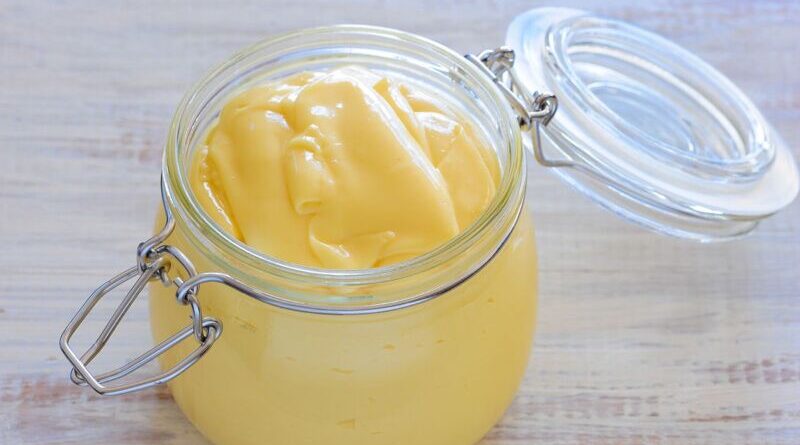Skip the mayo: Condiment can help improve the yield of fusion energy

Inefficient fusion fusion is one way to produce energy through nuclear fusion, however it is plagued by all kinds of scientific challenges (although progress is being made). Researchers at Lehigh University are trying to defeat one virus in this way by experimenting with mayonnaise placed in a rotating figure of eight. They described their latest findings in a new paper published in the journal Physical Review E with an eye toward increasing the energy yield from fusion.
The work is based on previous research in the LeHigh laboratory of mechanical engineer Arindam Banerjee, who focused on investigating the dynamics of fluids and other materials based on very high speeds and centrifugal forces. In this case, his team was examining what is known as the “unstable structure” of elastic/plastic materials. Scientists have debated whether this is due to preexisting conditions, or whether it is due to “malfunctioning of the home,” according to Banerjee. The question is related to various fields, including geophysics, astrophysics, explosive welding, and yes, inertial confinement fusion.
How exactly does inertial prison fusion work? As Chris Lee explained to Ars back in 2016:
The concept of prison integration is simple. To make two atoms join together, you need to bring their nuclei together. Both nuclei have a positive charge, so they repel each other, which means that a force is needed to convince the two hydrogen nuclei to touch. In a hydrogen bomb, energy is generated when a small fission bomb explodes, compressing the hydrogen nucleus. This combines to form heavier parts, releasing more energy.
For the fun of it, scientists choose not to detonate nuclear weapons every time they want to study fusion or use them to generate electricity. Which brings us to inertial prison fusion. In inertial confinement fusion, the hydrogen core consists of a spherical pellet of hydrogen ice inside a heavy metal casing. The casing is illuminated by powerful lasers, which burn a large portion of the material. The reaction force from the explosive vapors on the outside causes the rest of the shell to rupture. The resulting shockwave compresses the core of the hydrogen pellet to start fusion.
If the combination of bonds were to end there, the energy released would be small. But the energy released due to the initial combustion of the mixture in the center produces enough heat for the hydrogen outside the pellet to reach the required temperature and pressure. So, eventually (at least in computer models), all the hydrogen is consumed in combustion, and a lot of energy is released.
That’s the idea though. The problem is that hydrodynamic instability tends to form in the plasma region – Banerjee likens it to “two devices. [that] “fingers crossed” in the presence of gravity or any accelerating field-which reduces the energy output. The technical term is Rayleigh-Taylor instability, which occurs between two materials of different densities. different, where densities and pressures come in. Mayonnaise becomes an excellent analogue for investigating the instability of fast solids, without the need for a laboratory facility with and high temperature and pressure conditions, because it is a non-Newtonian fluid.
“We use mayonnaise because it acts like a solid, but when it’s under pressure, it starts to flow,” Banerjee said. Like an ordinary cast iron, if you put pressure on the mayonnaise, it will begin to deform, but when you remove the pressure, it will return to its original shape. So there is an elastic component followed by a static plastic component. The next part is when it starts to flow, and that’s where the uncertainty comes in.”
More mayo please
A 2019 video shows Rayleigh Taylor’s wheel instability experiment at Lehigh University.
His team’s 2019 experiments involved pouring Hellman’s Real Mayonnaise — no Miracle Sauce for these workers — into a Plexiglass container and creating a wave-like disturbance through among mayo. One experiment involved placing a container on a spinning wheel in a figure-eight shape and tracking the material with a high-speed camera, using an image processing algorithm to analyze the images. . Their results supported the fact that the uncertainty limit depends on the initial conditions, which are amplitude and wavelength.
This latest paper provides additional information on the structural properties of fusion capsules used in inertial confinement fusion, focusing on material properties, amplitude and wavelength, and rate of accelerating such materials as they reach the limit of Rayleigh-Taylor instability. . The more scientists know about the phase transition from elastic to stable, the better they can control the conditions and maintain the elastic or plastic component, to avoid instability. Banerjee et al. they were able to identify conditions for maintaining the elastic modulus, which could inform the design of future pellets for inertial confinement fusion.
That said, the mayonnaise experiments are analog, orders of magnitude away from real-world nuclear fusion scenarios, which Banerjee readily accepts. However he is hopeful that future research will improve predictability of what happens inside the pellets in their high-temperature, high-pressure environment. He said: “We are one resource in this great wheel of researchers.” And we’re all working to make inertial fusion affordable, and therefore accessible.
DOI: Physical Review E, 2024. 10.1103/PhysRevE.109.055103 (About DOIs).
#Skip #mayo #Condiment #improve #yield #fusion #energy
